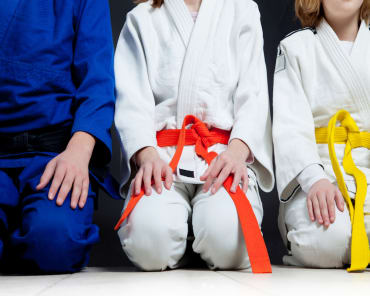The journey in Brazilian Jiu-Jitsu (BJJ) is not always a smooth ascent; it often involves setbacks, challenges, and, occasionally, injuries. Returning to the mats after an injury is a testament to resilience, determination, and a deep love for the art. This blog explores the emotional and physical aspects of making a comeback to BJJ after an injury, providing guidance for a safe and successful return.
1. Patience and Mindful Recovery
Returning to BJJ after an injury requires a generous dose of patience. It's crucial to prioritize mindful recovery over rushing back into full training. Listen to your body, follow the guidance of healthcare professionals, and gradually reintroduce physical activity. Patience during the recovery phase sets the foundation for a more sustainable return to the mats.
2. Communicate with Instructors and Training Partners
Open communication is key when making a comeback after an injury. Inform your instructors and training partners about your injury, any limitations, and your planned return. This ensures that everyone is aware of your situation, allowing for adjustments in training drills and sparring sessions to accommodate your needs and promote a safe training environment.
3. Set Realistic Expectations
Setting realistic expectations is vital for a successful return to BJJ. Understand that your body may not perform at its pre-injury level immediately. Set achievable short-term goals, celebrate small victories, and gradually build back your strength, flexibility, and overall conditioning. Realistic expectations help manage frustration and foster a positive mindset during the comeback journey.
4. Focus on Technique Over Intensity
As you return to the mats, prioritize technique over intensity. Emphasize precision and control in your movements rather than engaging in high-impact or physically demanding sparring sessions. Concentrating on technique allows for a gradual reacclimatization to the physical demands of BJJ, reducing the risk of re-injury.
5. Invest in Injury Prevention
Learn from the experience of your injury and invest in injury prevention strategies. Incorporate targeted warm-up exercises, stretching routines, and strength training to enhance the resilience of vulnerable areas. Consult with a physical therapist or a knowledgeable coach to develop a personalized injury prevention plan tailored to your specific needs.
6. Gradual Return to Sparring
When considering sparring, adopt a gradual approach. Begin with controlled, technical rolls with trusted training partners who are aware of your situation. As confidence and physical condition improve, slowly increase the intensity and duration of sparring sessions. A step-by-step return to sparring minimizes the risk of aggravating the injury.
7. Listen to Your Body
One of the most crucial aspects of returning to BJJ after an injury is actively listening to your body. Pay attention to any signals of discomfort, pain, or fatigue. If you experience pain or unusual sensations, take a step back, assess the situation, and consider consulting with a healthcare professional before resuming full training.
8. Mental Resilience and Confidence Building
Injuries can have a significant impact on mental resilience. Building confidence in your body's abilities is as essential as physical rehabilitation. Visualize successful techniques, focus on positive aspects of your training, and acknowledge the progress you make during the comeback. Cultivating mental resilience is integral to overcoming doubts and fears associated with returning from injury.
9. Collaborate with Coaches for Modified Training Plans
Engage with your coaches to develop modified training plans that align with your recovery goals. Coaches can provide valuable insights into alternative exercises, drills, and techniques that accommodate your current physical condition. Collaborative planning ensures a balanced and safe approach to training.
10. Celebrate Milestones and Progress
Celebrate milestones and progress during your comeback journey. Whether it's achieving a specific flexibility goal, completing a full training session, or participating in controlled sparring, acknowledge and celebrate each accomplishment. Recognizing progress reinforces a positive mindset and motivates continued dedication to the recovery process.
In conclusion, returning to BJJ after an injury is a multifaceted journey that involves physical rehabilitation, mental resilience, and strategic planning. Patience, communication, realistic expectations, and a focus on technique contribute to a safe and successful comeback. Embrace the process, celebrate small victories, and savor the joy of being back on the mats, embodying the resilience that defines the spirit of Brazilian Jiu-Jitsu.






